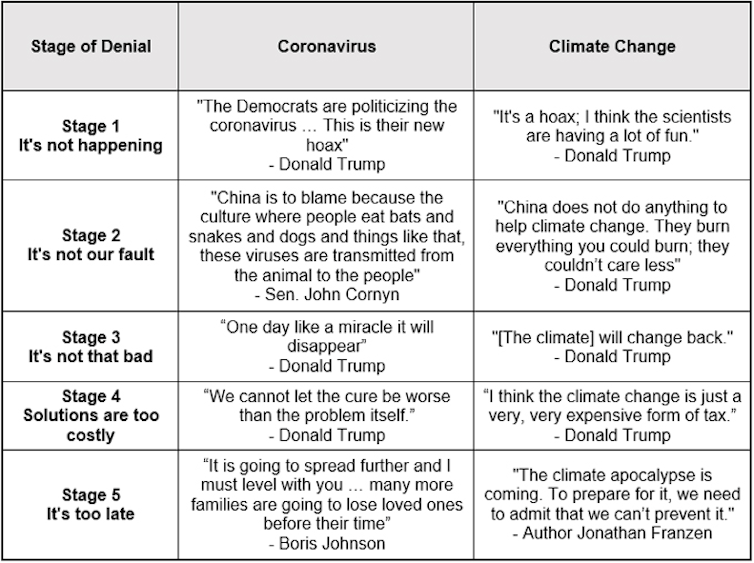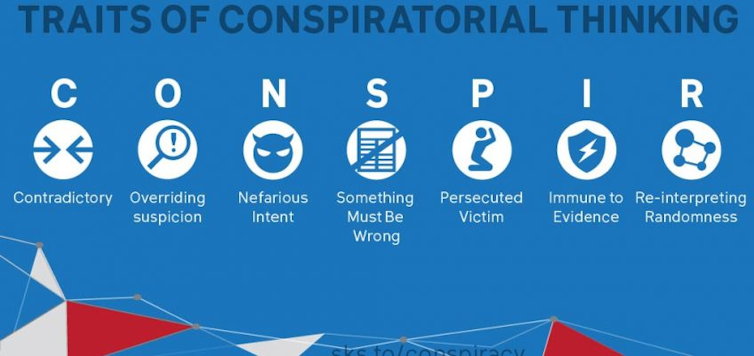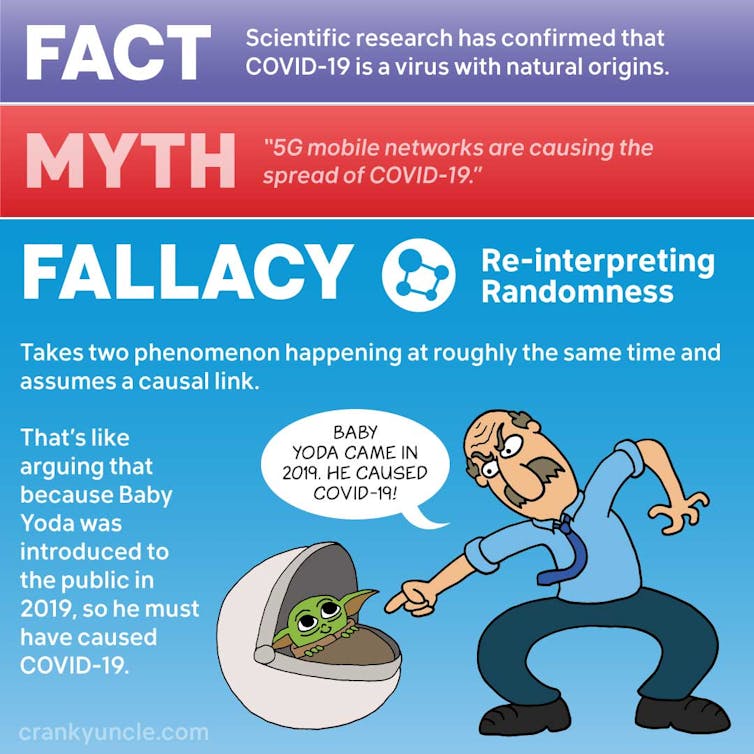
Many scientific findings continue to be disputed by politicians and parts of the public long after a scholarly consensus has been established. For example, nearly a third of Americans still do not accept that fossil fuel emissions cause climate change, even though the scientific community settled on a consensus that they do decades ago.
Research into why people reject scientific facts has identified people’s political worldviews as the principal predictor variable. People with a libertarian or conservative worldview are more likely to reject climate change and evolution and are less likely to be vaccinated against COVID-19.
What explains this propensity for rejection of science by some of the political right? Are there intrinsic attributes of the scientific enterprise that are uniquely challenging to people with conservative or libertarian worldviews? Or is the association merely the result of conflicting imperatives between scientific findings and their economic implications? In the case of climate change, for example, any mitigation necessarily entails interference with current economic practice.
We recently conducted two large-scale surveys that explored the first possibility – that some intrinsic attributes of science are in tension with aspects of conservative thinking. We focused on two aspects of science: the often tacit norms and principles that guide the scientific enterprise, and the history of how scientific progress has led us to understand that human beings are not the centre of the universe.
Sociologist Robert Merton famously proposed norms for the conduct of science in 1942. The norm of “communism” (different from the political philosophy of communism) holds that the results of scientific research should be the common property of the scientific community. “Universalism” postulates that knowledge should transcend racial, class, national or political barriers. “Disinteredness” mandates that scientists should conduct research for the benefit of the scientific enterprise rather than for personal gain.
These norms sit uneasily with strands of standard contemporary conservative thought. Conservatism is typically associated with nationalism and patriotism, at the expense of embracing cooperative internationalism. And the notion of disinterestedness may not mesh well with conservative emphasis on property rights.
Science has enabled us to explain the world around us but that may create further tensions – especially with religious conservatism. The idea that humans are exceptional is at the core of traditional Judeo-Christian thought, which sees the human as an imago Dei, an image of God, that is clearly separate from other beings and nature itself.
Against this human exceptionalism, the over-arching outcome of centuries of research since the scientific revolution has been a diminution of the status of human beings. We now recognise our planet to be a rather small and insignificant object in a universe full of an untold number of galaxies, rather than the centre of all creation.
Testing the issues
We tested how those two over-arching attributes of science – its intrinsic norms and its historical effect on how humans see themselves – might relate to conservative thought and acceptance of scientific facts in two large-scale studies. Each involved a representative sample of around 1,000 US residents.
We focused on three scientific issues; climate change, vaccinations, and the heritability of intelligence. The first two were chosen because of their known tendency to be rejected by people on the political right, allowing us to observe the potential moderating role of other predictors.
The latter was chosen because the belief that external forces such as education can improve people and their circumstances is a focus of liberalism. Conservatism, on the other hand, is skeptical of that possibility and leans more towards the idea that improvement comes from the individual – implying a lesser role for the malleability of intelligence.
The fact that individual differences in intelligence are related to genetic differences, with current estimates of heritability hovering around 50%, is therefore potentially challenging to liberals but might be endorsed by conservatives.
The two studies differed slightly in how we measured political views and people’s endorsement of the norms of science, but the overall findings were quite clear. Conservatives were less likely to accept the norms of science, suggesting that the worldviews of some people on the political right may be in intrinsic conflict with the scientific enterprise.
Those people who accepted the norms of science were also more likely to endorse vaccinations and support the need to fight climate change. This suggests that people who embrace the scientific enterprise as a whole are also more likely to accept specific scientific findings.
We found limited support for the possibility that belief in human exceptionalism would predispose people to be more sceptical in their acceptance of scientific propositions. Exceptionalism had little direct effect on scientific attitudes. Therefore, our study provided no evidence for the conjecture that the long history of science in displacing humans from the centre of the world contributes to conversatives’ uneasiness with science.
Finally, we found no strong evidence that people on the political left are more likely to reject the genetic contribution to individual variation in intelligence. This negative result adds to the evidence that science denial is harder to find on the left, even concerning issues where basic aspects of liberal thought – in this case the belief that people can be improved – are in potential conflict with the evidence.
The two studies help explain why conservatives are more likely to reject scientific findings than liberals. This rejection is not only dictated by political interests clashing with a specific body of scientific knowledge (such as human-caused climate change), but it appears to represent a deeper tension between conservatism and the spirit in which science is commonly conducted.![]()
—————————
This blog has been written by Cabot Institute for the Environment member Professor Stephan Lewandowsky, Chair of Cognitive Psychology, University of Bristol and Klaus Oberauer, Professor of Cognitive Psychology, University of Zurich. This article is republished from The Conversation under a Creative Commons license. Read the original article.






